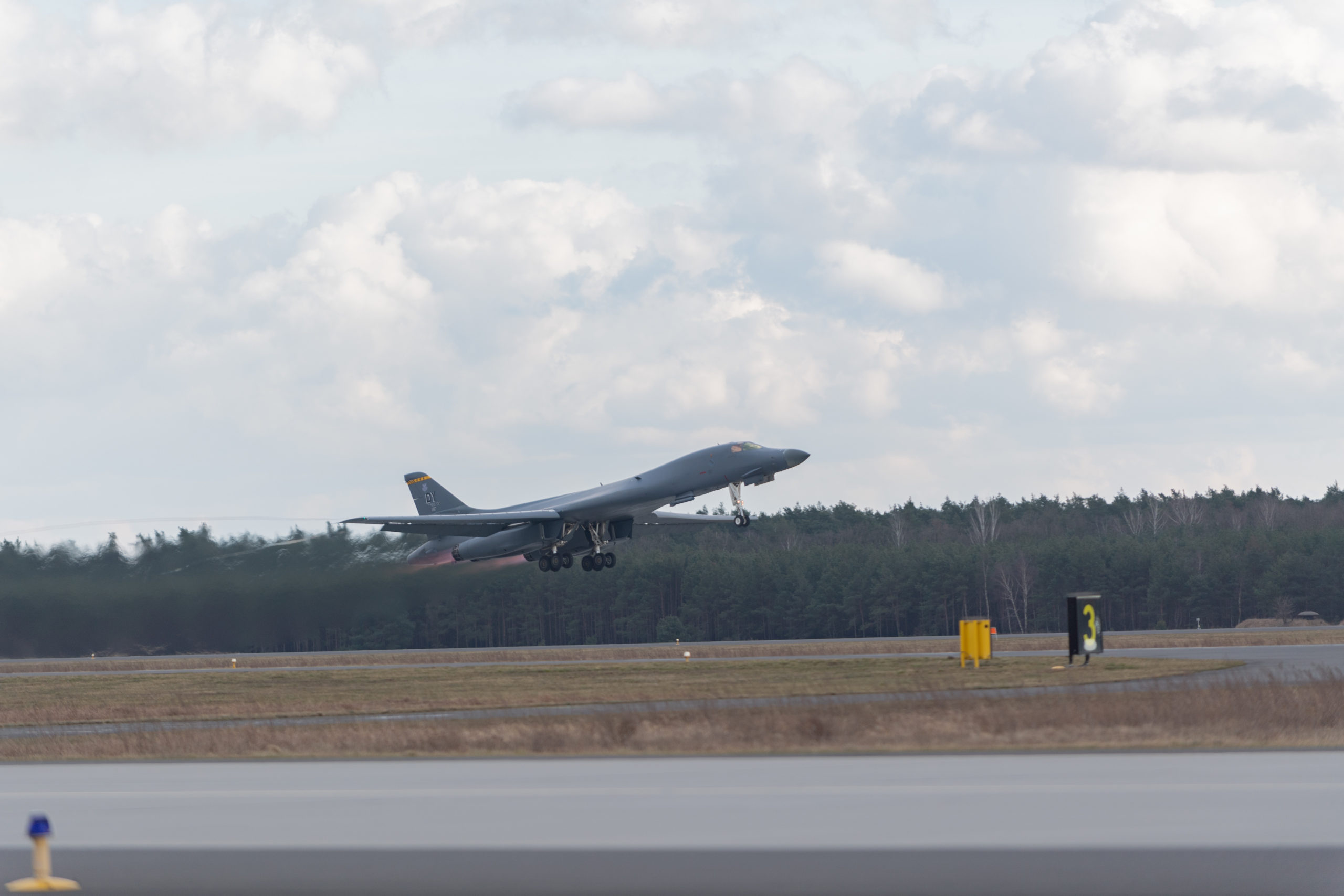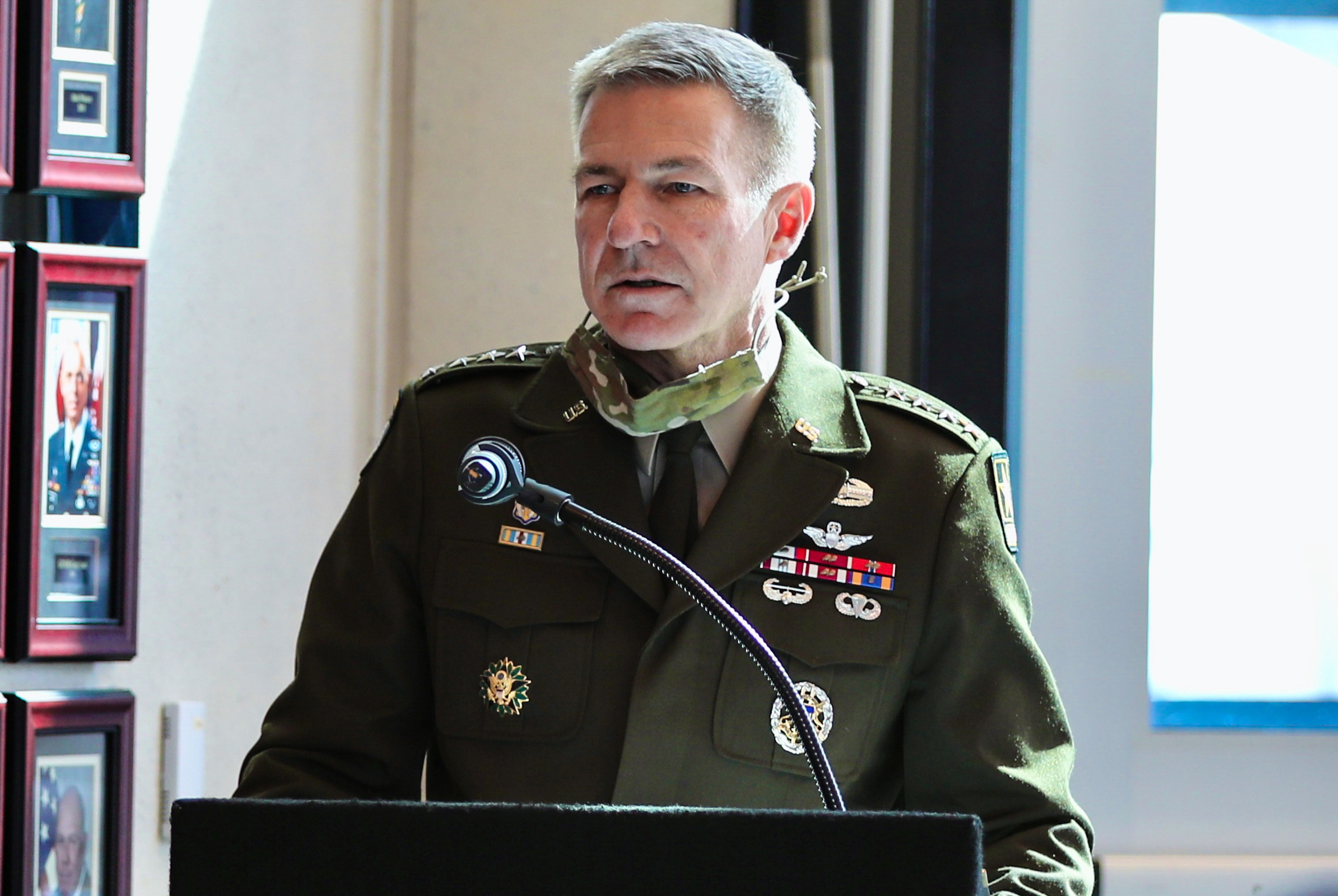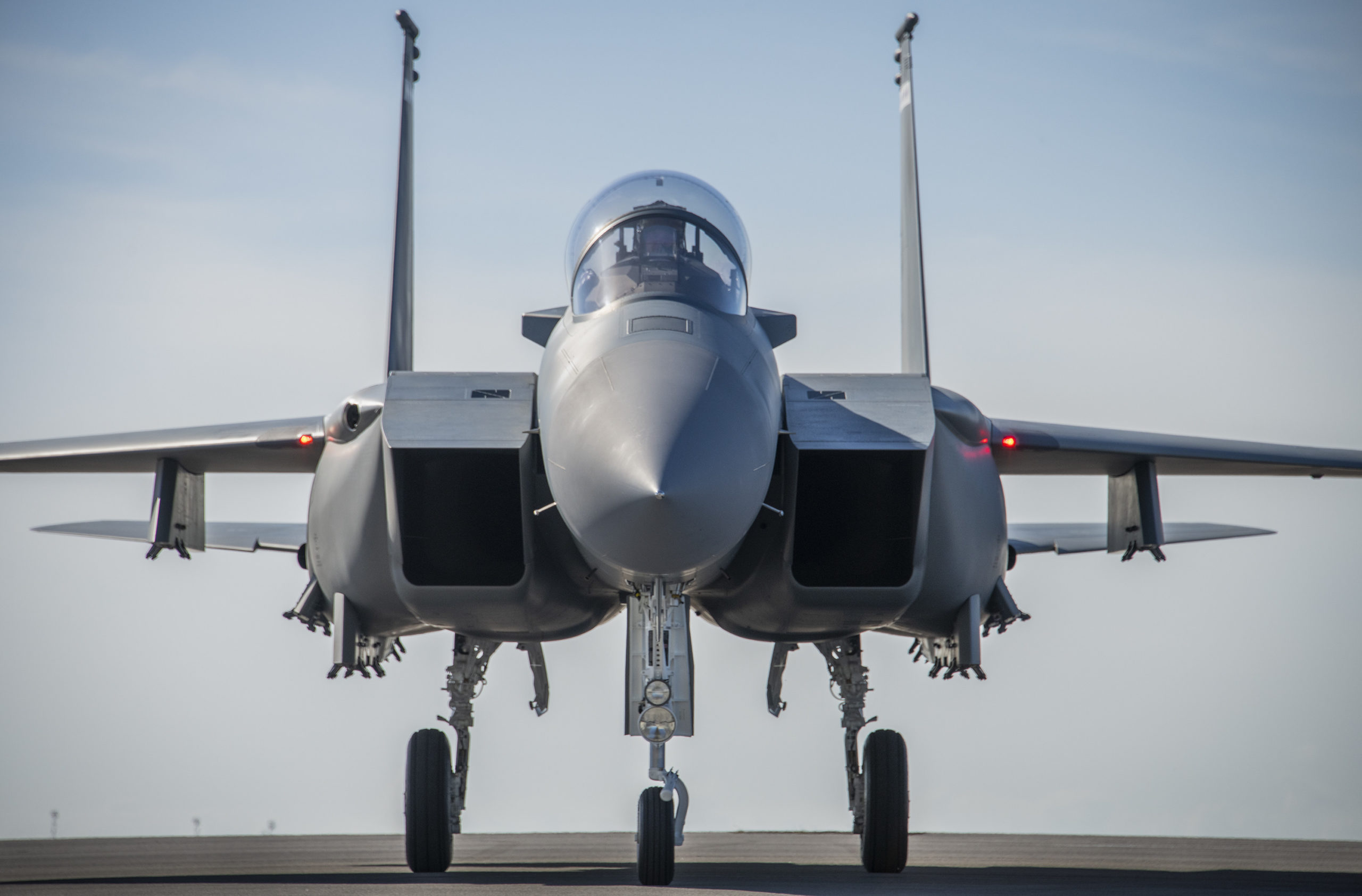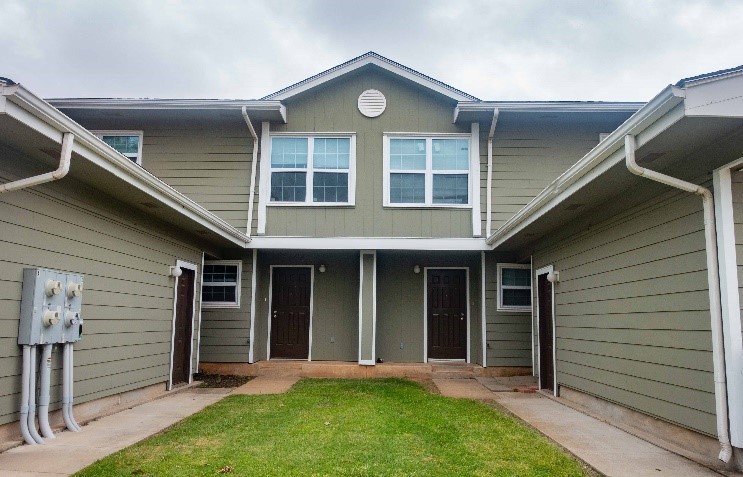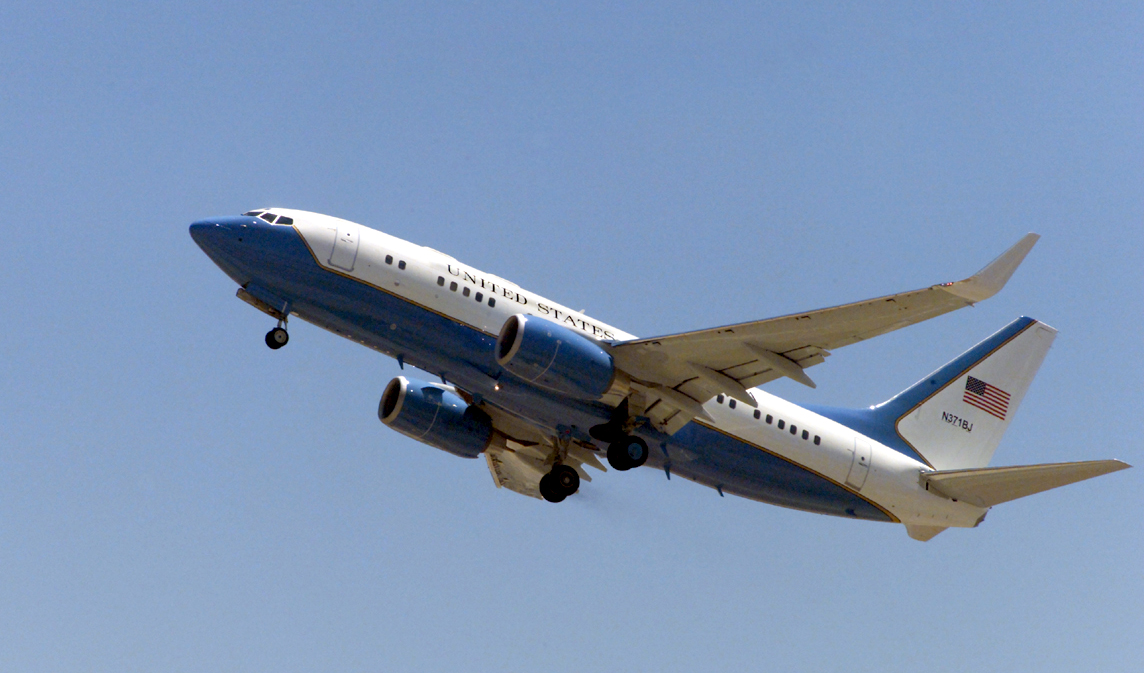B-1s operating in Eastern Europe as part of a bomber task force continued their tour of the region, deploying to Poland for the first time March 12.
The B-1B from the 7th Bomb Wing at Dyess Air Force Base, Texas, touched down at Powidz, Poland—the first time a Lancer has landed in the country. While on the ground, the bomber conducted a “hot pit” refueling—filling up on fuel with engines running to return to flight rapidly, according to a U.S. Air Forces in Europe release.
“Proving the rapid refueling concept today in Poland alongside some of our closest allies speaks for itself,” said Gen. Jeffrey L. Harrigian, U.S. Air Forces in Europe-Air Forces Africa commander, in the release. “Our bombers can get after the mission anytime, anywhere.”
During the mission, the B-1 also received fuel from a USAF KC-135 from the 100th Air Refueling Wing at RAF Mildenhall, United Kingdom, and flew alongside Polish F-16s, Swedish JAS-39 Gripens, and Danish F-16s, according to the release.
The B-1s deployed to Norway last month for the first time in a bomber task force deployment aimed at integrating the bombers in new locations and training in the Arctic. USAFE Deputy Commander Lt. Gen. Steven L. Basham said March 5 that while bombers have gotten used to flying out of certain locations in Europe, the task force gives B-1s a chance to operate in new places.
“If we don’t expand our horizon and look for other opportunities to work with other allies, other partners, then we miss true training opportunities to continue to develop ourselves and, even more so I would say, to learn from others,” Basham said.
About four days before the Poland mission, a B-1 flew to another base in northern Norway for a “warm pit” refueling and trained with Norwegian and Swedish ground forces.
